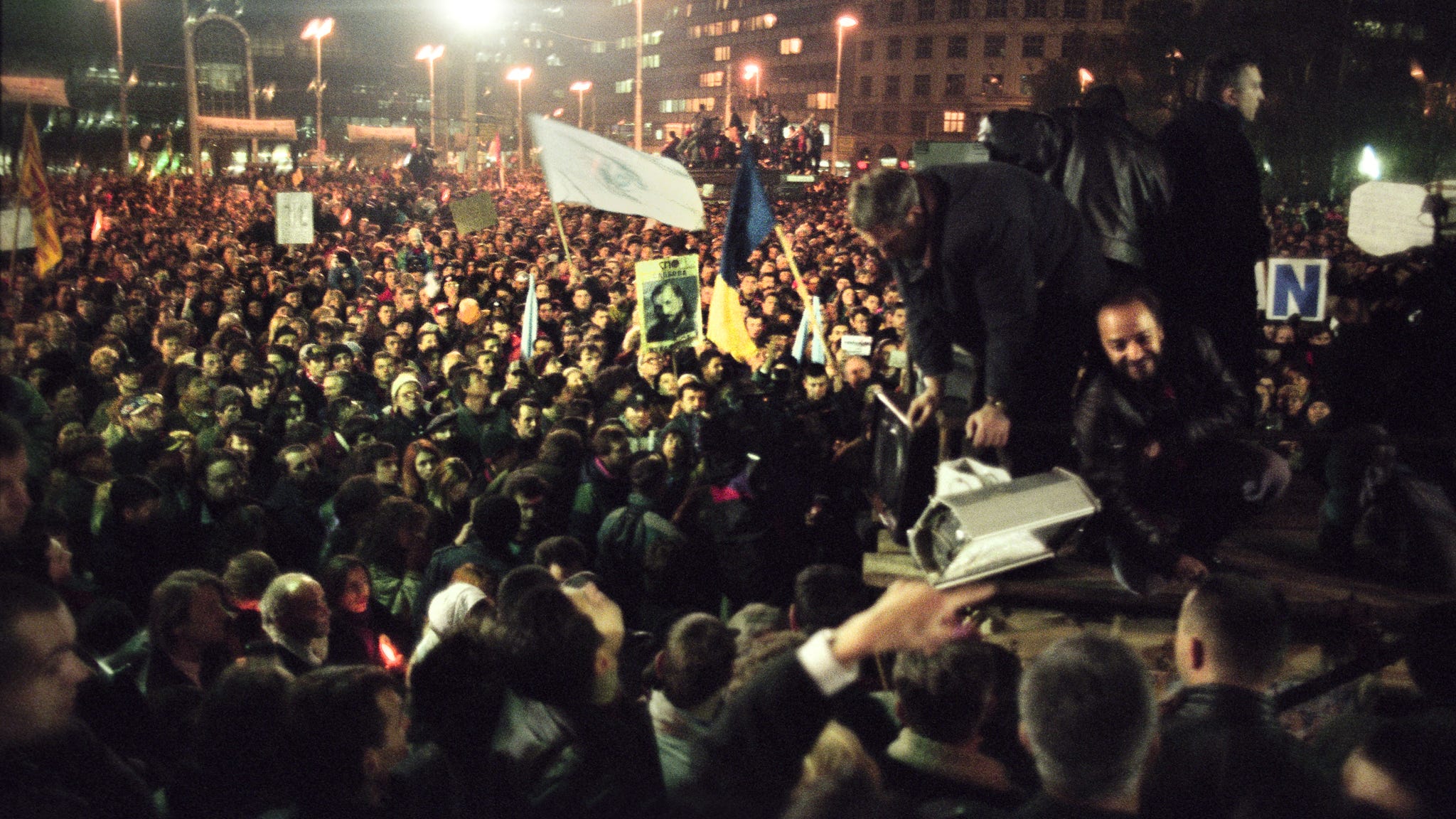These Rebel Reporters Harnessed ’90s Dial-Up Internet to Resist a Nationalist Dictator
Back when you were still hoarding AOL CD-ROMs, a team of silenced Serbians took their message to the masses via a strange new tool called online journalism.

Photos by Alan Chin
Belgrade was bedlam. For a week in November 1996, protesters marched on the Serbian capital, the clang of pots on pans and the screams of whistles filling the streets – necessary tactics, the protesters said, to drown out the lies of a president who’d stolen an election.
By November 25, in spite of freezing temperatures, the hoard swelled to nearly 200,000, uniting university students, Serb nationalists and anti-war advocates – groups that had been staunch political rivals in the past. Their voices grew hoarse after hours of chanting and singing. They threw eggs at the offices of the largest newspaper in the country, and the only national television station, the latter of which had called them “a handful of desperate people.”
But outside of Belgrade, in small towns where the only available news sources were owned by the state, the average citizen did not know there were protests happening at all. Not only did the radio and TV broadcasts distort their scale, newspapers…

